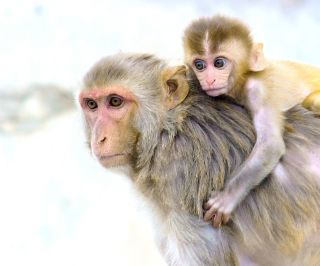Bullying
Why Are Bullies Popular? Brain Science Can Explain
Research documents the way brains can harness empathy for cruelty.
Posted February 16, 2024 Reviewed by Monica Vilhauer
Key points
- Brain science has learned the key role empathy plays in abusive behaviors.
- We think our empathy should stop us from bullying, but it can facilitate maltreatment.
- Bullies and abusers use empathy to bond with community, while at the same time targeting victims with cruelty.
- Research shows empathy manifests in two opposing ways that impact our conduct, making it caring or cruel.
Brains harnessing empathy for cruelty is counter-intuitive. In fact, we usually think of someone who is empathic as utterly unable to bully others. Empathy is our innate capacity to recognize what others are thinking, feeling, and intending. Dr. Helen Reiss explains we are born wired for empathy: studies have shown that infants will imitate facial expressions very early as they are mirroring those caring for them.

Researchers have seen that animals who identify the distress or pain of another in their species will halt aggressive behaviour in response. Primatologist Jules Masserman and colleagues conducted research in 1964 that showed rhesus monkeys would not pull a chain to access food when they learned it meant other monkeys would get an electric shock as a result. They chose not to have the food if it caused others to suffer. That is empathy at work.
Empathy is our capacity to walk in someone else’s shoes, see the world from their point of view, feel their pain. Our empathy is critical to our social interactions and our chance of safety and survival by living in community. Bullying is the opposite: it causes pain; it divides people; it shames and conveys the message to the targets that they don’t belong. Bullying does not acknowledge our essential human bond; instead, it dehumanizes.
Bullies are often well-liked in their communities
This is why it’s perplexing that individuals who bully and abuse are also well-liked in the community. They’re often popular, charismatic, and sometimes even have cult-followings. Even children who bully seem able to turn off and turn on their cruel conduct so that only victims are targeted, while other children are treated with kindness. Even children who bully can cover up their harmful behaviour when adults are present.
With adults who bully and abuse, it is more sophisticated. As is extensively documented, they are adept at grooming higher-ups in the workplace, masquerading as the pillar of the community in social circles, as well as virtue-signalling to ensure they are not identified as abusive. This dual personality — one that exudes respectable kindness and the other that defaults to maltreatment of victims — frequently acts as an effective cover-up, even from the law.
Individuals in recent media scandals such as Harvey Weinstein, Larry Nassar, and Bill Cosby are classic examples of abusive individuals who are well-established and honoured in their communities. Their abuse goes on for decades by being systemically ignored as if it is not possible that such respected, powerful, prestigious people could also be extremely harmful to targets. One minute the person is kind and caring, the next minute he’s humiliating someone. How can this person be a “bully-empath”? How can someone be both empathic and abusive?
Empathy is not one brain system, but two
A chilling answer to the bully-empath split is provided in the research and work of neuroscientist Dr. Simon Baron-Cohen. He and his colleagues refer to those who do harm to others as “Zero-Negative” on the empathy spectrum. Those who are Zero-Negative can include individuals who are diagnosed as borderline, narcissistic, and psychopathic. What these individuals have in common from a neuroscience perspective is a severely underactive empathy circuit. Their brains behave in atypical ways when examining the ten interactive regions of the empathy circuit. When researchers look separately at the two empathy systems within the circuit, those who harm others have only one empathy system that is intact and the other that is eroded.
Baron-Cohen’s research offers an answer to the confusing fact that those who bully and abuse also appear to have empathy. A psychopath has “intact cognitive empathy but reduced affective empathy.” In other words, a psychopath who lies, maltreats, abuses, harms others in a variety of ways, and doesn’t care at all about it, has a brain with eroded affective empathy. Our affective empathy is how we feel someone else’s pain. We can see their pain, hear it, and actually experience it. If you see someone cut their hand, you are likely to physically react, recoil, wince.
The psychopath does not feel someone else’s pain. They lack affective empathy. However, they still have access to cognitive empathy. This gives them the advantage of being able to read others. In a cold, calculating way, they can think very adeptly about what someone thinks, what emotions they have, and what intentions they plan. The psychopath – without affective reactions like remorse, guilt, anguish – uses their cognitive insights to create a following and to destroy targets.
When the bullying or abusive individual is reported on or confronted with the harm they are causing, they deny it, and call upon their followers (those they treat with kindness and offer advantages to) in order to vouch for them. The bully or abuser is aware that they are causing harm and they are motivated to cover it up.
Textbook case of Zero-Negative empathy
A textbook example of this is nurse Lucy Letby in the U.K. who doctors reported as suspiciously involved in far too many infant deaths. She accused them of bullying her. The doctors had to issue an apology and this allowed her to continue as a serial killer of babies. Ultimately she was charged and convicted. While Letby was killing the babies, she was also comforting the devastated parents who were thankful for her care and kindness.
Nurse Letby has cognitive empathy. While she did not hesitate to kill seven babies and tried to kill six more, she knew how to manipulate doctors and administrators, and most tragically, she knew how to read grieving parents. If Letby’s brain was studied by Baron-Cohen and his team of neuroscientists, it would show atypical, eroded affective empathy.
Baron-Cohen asserts at the end of his book The Science of Evil that empathy “is the most valuable resource in our world” and he expresses profound concern that it is not the cornerstone of education. He’d like to see empathy prioritized in parenting and policing and especially politics. The erosion of empathy is complex, but environment plays an outsized role. Abuse begets abuse. The neglected, harmed, verbally put down child is far more likely to have atypical affective empathy which can lead to bullying and abusive behaviours. Knowing how critical our two empathy systems (affective and cognitive) are for all individuals, communities, and the world makes us realize how much we need to invest in it.
References
Baron-Cohen, S. (2011). The Science of Evil. New York: Hachette.




